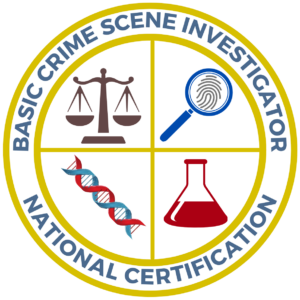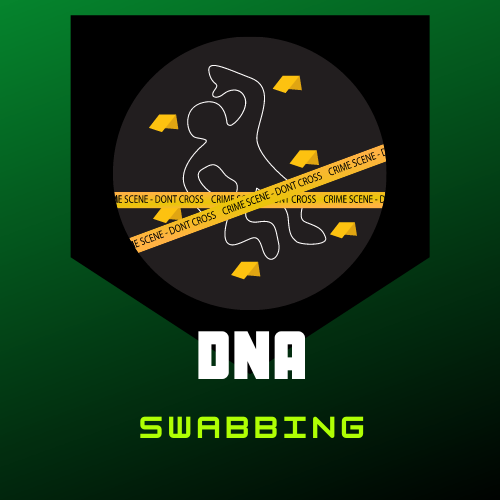Criminal Investigations & Forensics
Criminal Investigations & Forensics (CIF) Course
The CIF course is the intermediate course for a Investigations & Forensics pathway. CIF is also used as an advanced course in many Law Enforcement Pathways.
CIF is a highly marketable and engaging overview of working crime scenes and conducting investigations. Students will learn about processing crime scenes, collecting evidence, and interpreting the results. They will also learn the legal applications of laws and the Constitution that serve as guardrails to the investigative process. Investigative skills such as interviews, interrogations, crime scene reconstruction and criminal profiling are also covered.
Instructional Plans & Resources
LAPSEN Unit Plans
LAPSEN has a complete course (120-150 hours) of unit lesson plans available to members – Click Here to access.
Other Lesson Plan Sources
California Educators Together– The great state of California has an insane amount of resources and lessons. Be sure to search with different key words. You do have to have an account – but they give them to all teachers: Click Here
Texas CTE Lesson Plans – They have some materials for Law & Public Safety: Click Here
Forensic Science Teachers Facebook Page – If you join, you get access to the share drive. INSANE amount of lessons and community support! Click Here
Industry Recognized Credentials (IRC) for this Pathway
These certifications satiate all Perkins legislative requirements for Industry Recognized Credentials. Order student certification tests – Click Here
 National Basic Crime Scene Investigator
National Basic Crime Scene Investigator
We have been working together with Subject Matter Experts from around the country to create a certification that is relevant and valuable to your students and the industry. This entry level certification will prepare students for a career out of high school or tech college as a crime scene technician. The skills learned are applicable to many careers in the law and public safety realm.
This credential aligns with the LAPSEN Investigations and Forensics course standards and supporting lesson plans, curricula and resources.
Click Here to learn more
MicroCredentials (MC) for this Course
All MicroCredentials are being developed and should be ready soon.

Criminal Investigations & Forensics Course Outline with Standards
Click Here to open the CIF standards document.
Section 1: Introduction to Investigations
|
Objective 1: Create a timeline of the historical influences to contemporary criminal investigation and forensics. |
|
Objective 2: Explore the roles and responsibilities of criminal investigators and forensic scientists. |
|
Objective 3: Recognize the fundamental elements of a preliminary investigation. |
|
Objective 4: Differentiate between different types of investigations. |
Section 2: Legal and Ethical Issues in Investigations
|
Objective 1: Describe ethical and professional considerations for criminal investigators and forensic scientists.. |
|
Objective 2: Describe reasons for flawed investigations and forensics including |
|
Objective 3: Explain how the U.S. Constitution guides investigations & police actions |
Section 3: Documenting the Crime Scene
|
Objective 1: Process a basic crime scene |
|
Objective 1: Create various investigative reports and legal documents used in criminal investigations. |
|
Objective 3: Photograph the crime scene. |
|
Objective 4: Interpret common evidence for clues to a crime. |
Section 4: Evidence Collection and Types of Evidence
|
Objective 1: Demonstrate the skills of crime scene processing and evidence collection. |
|
Objective 2: Create various investigative reports and legal documents used in criminal investigations including warrant applications, narratives, and chain of custody reports. |
|
Objective 3: Demonstrate common evidence collection techniques used in criminal investigations. |
|
Objective 4: Interpret common evidence for clues to a crime. |
Section 5: Interviews and Interrogations
|
Objective 1: Explain how interviews and interrogations are conducted. |
|
Objective 2: Explain how the Constitution impacts interviews and interrogations |
Section 6: Crimes against Property
|
Objective 1: Define different property crimes. |
|
Objective 2: Explain collecting and preserving evidence unique to property crimes. |
Section 7: Crimes against Persons
|
Objective 1: Differentiate between various crimes against person(s). |
|
Objective 2: Explain techniques used to interview victims of traumatic crimes |
|
Objective 3: Describe the impact of crimes on individuals. |
|
Objective 4: Write an investigative report and other legal documents needed for an investigation. |
Section 8: Criminology and Crime Analysis
|
Objective 1: Explain different criminological theories. |
|
Objective 2: Describe assessing victim risk of crime. |
|
Objective 3: Obtain the skills needed to conduct crime analysis using both quantitive and qualitive measures. |
Section 10: Special Investigations
|
Objective 1: Describe terrorism investigations |
|
Objective 2: Identify potential hazardous drug-related situations and take the correct steps to ensure personal and community safety. |
|
Objective 3: Explain safety precautions needed for digital and cybercrime. |
|
Objective 4: Identify the key concepts related to analyzing bomb blasts, handling explosive materials, and documenting evidence. |
|
Objective 5: Explain the difficulties encountered during mass casualty incidents and learn how investigators address these challenges. |
|
Objective 6: Describe the techniques and challenges associated with evidence recovery that have been submerged in water. |
Section 11: Trends in Criminal Investigations
|
Objective 1: Identify and explain new trends in DNA criminal investigation and explain how those trends can be used in a criminal investigation. |
|
Objective 2: Explain the concepts of predictive policing and the role of a criminal analyst. |
|
Objective 3: Describe how shot spotters can contribute to new trends in law enforcement by recognizing their role in quickly detecting and locating gunshots. |
Section 12: Careers Unit
|
Objective 1: Create a digital career portfolio |
|
Objective 2: Identify different career options within criminal investigations and forensics. |
|
Objective 3: Describe methods that help officers stay mentally fit. |
|
Objective 4: Explain the responsibilities of three different career options within the criminal investigations and forensics. |
